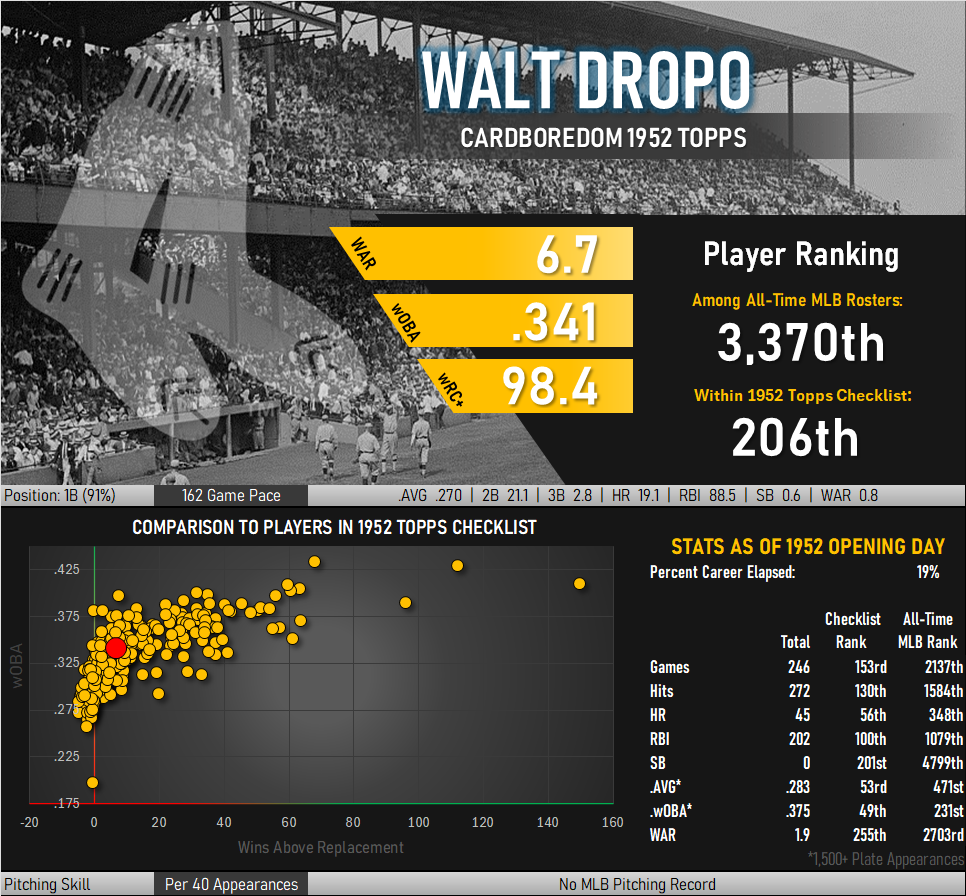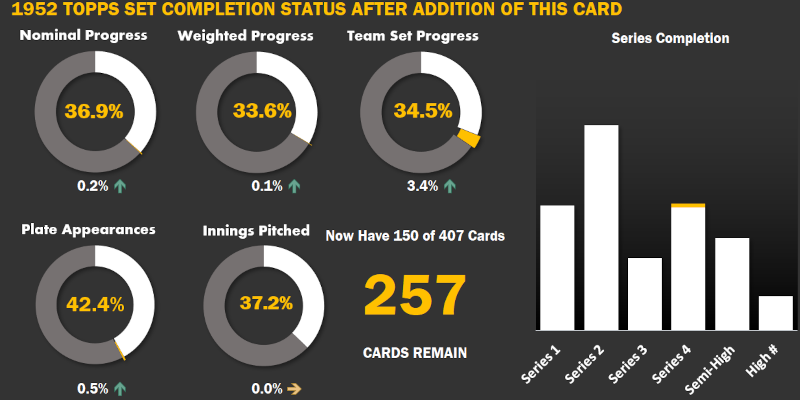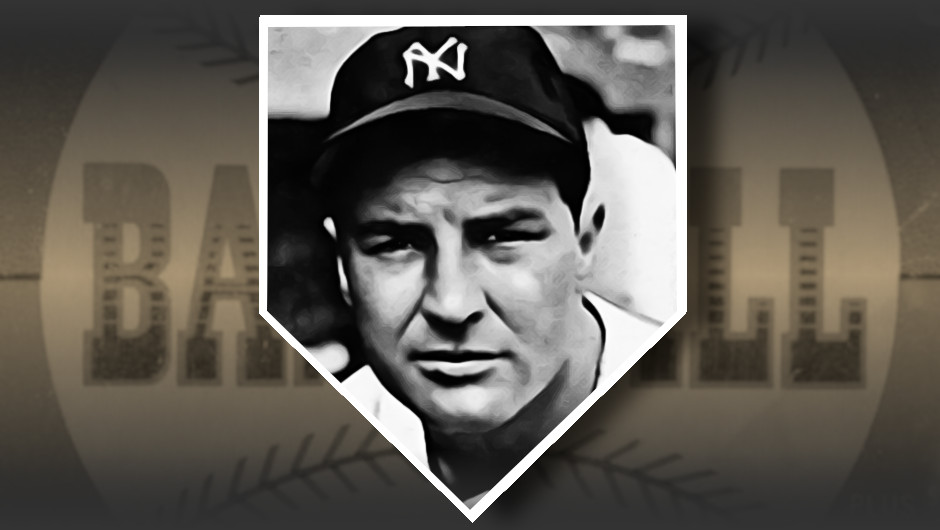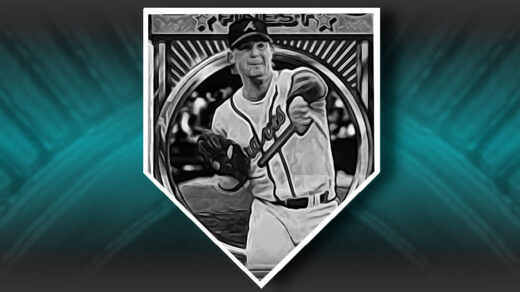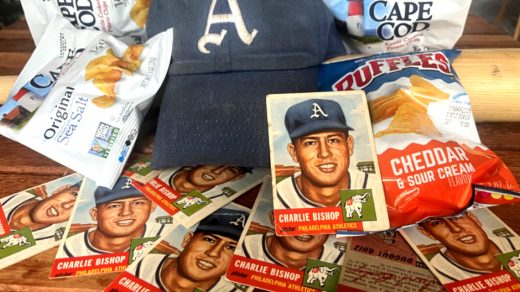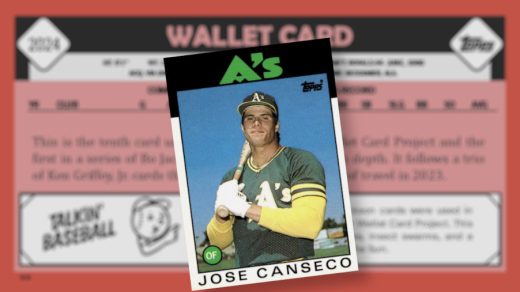The budget I set aside to chase the 1952 Topps set dictates that most cards will be in very low grade. This can be fun, as the damage inflicted on cards sometimes tells as much a story as the text on the card. Filling out card #235 in my set is the example shown below. What I like is that a young fan must have opened a pack of cards in 1952, read about Walt Dropo being traded to the Detroit Tigers that season, and decided to take it upon himself to update the card. The trade took place on June 3, 1952. With “Tigers” written once in pencil and traced over again in blue ink, I like to imagine a rumor of a trade prompting the initial edit followed by the finality of ink once the deal became official.
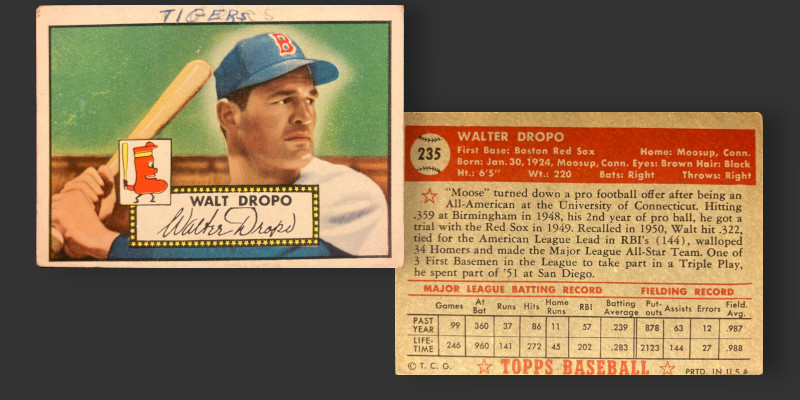
This is a good looking card in the 1952 set, but then again Topps would have likely singled out the 1950 Rookie of the Year for special treatment. He is one of four players to get a horizontal layout in this series and is part of the 11% of the set with this design. Some players are portrayed with natural backgrounds, others are given solid colors, and few even have solid backdrops with a halo of light emanating from behind their head. Dropo is pictured ready to bat against a backdrop of empty bleachers, but the photo includes the halo effect that is otherwise reserved for solid backgrounds. The sky behind the stands is given green ink rather than blue, making it the card reminiscent of Fenway’s Green Monster.
Dave Winfield is the Walt Dropo of the ’70s
Decades after this card was produced the sports world became infatuated with a college athlete who was celebrating his 8-month birthday on the day of the Red Sox/Tigers trade. Dave Winfield, who was also north of 6’5″ tall, excelled in multiple college sports and was drafted in the first round by the San Diego Padres (baseball), as well as later rounds by the Minnesota Vikings (football), Atlanta Hawks and Utah Stars (basketball).
Walt Dropo obviously played pro baseball but had made quite a name for himself at the University of Connecticut. Dropo left the school as UConn’s all-time top scorer in basketball. He was a first round draft basketball pick in the BAA draft (forerunner to today’s NBA) and a 9th round selection of the NFL’s Chicago Bears.
Winfield went on to have the better career of the two, though it wasn’t apparent for several years who would ultimately win out in offensive talent. Winfield clearly had the edge in defensive skill. Dropo hit 34 homeruns in his first full season, while Winfield needed 6 fulltime years to tie the mark and would exceed it only once. Dropo’s run production led or kept pace with Winfield through this period before injuries took their toll and reduced his output. Dropo retired after 13 seasons, half of which were played only part-time. His early injuries shortened his career and leaves the door open to many open-ended “what-if” scenarios.
